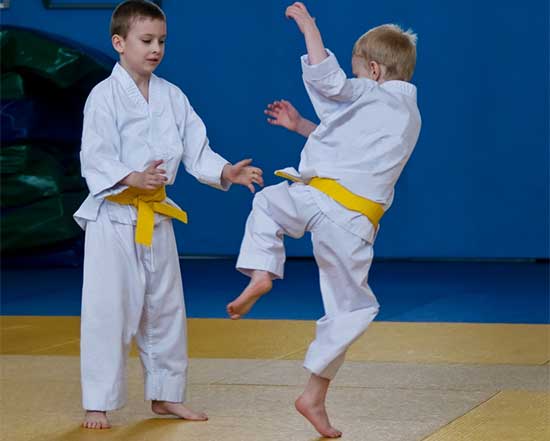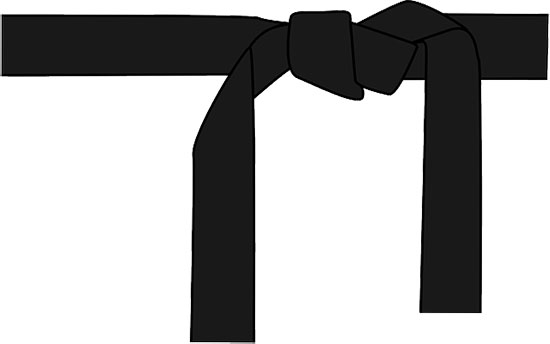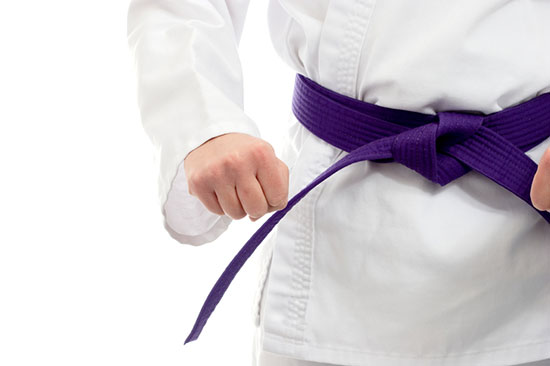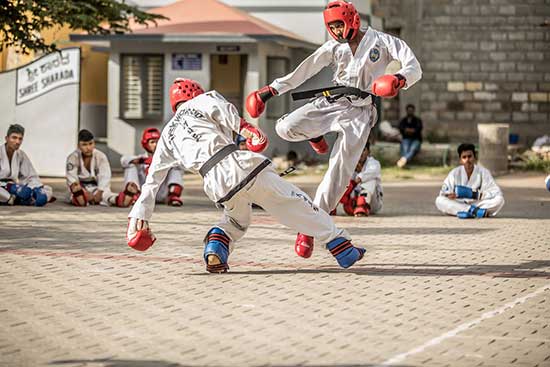You’re about to dive into the dynamic world of martial arts where the striking prowess of Taekwondo clashes with the grappling might of Wrestling.
You’ll uncover their historic origins, compare their core techniques, and explore their rigorous training routines.
As you dissect their competitive strategies, you’ll gain a deeper understanding of each discipline’s influence on the other.
Prepare to navigate the intricate landscape where two of the most revered combat sports meet.
Contents
Key Takeaways
- Taekwondo and wrestling have distinct historical roots and techniques, with Taekwondo originating from Korea’s military history and emphasizing striking and kicking, while wrestling has a rich narrative woven into many cultures and focuses on grappling and holds.
- Training regimens in Taekwondo prioritize flexibility, speed, and agility for rapid strikes, while wrestlers focus on building raw strength and endurance through weight training and intense circuit workouts.
- Taekwondo’s competitive strategy revolves around precision, agility, and distance management, evoking confidence in striking accuracy and utilizing skill display for intimidation, while wrestling’s primary focus is on strength and control.
- Both disciplines have cross-discipline influences and innovation, with wrestlers integrating Taekwondo’s dynamic footwork and Taekwondo athletes incorporating wrestling’s close-range tactics, resulting in improved footwork and enhanced strikes, and fostering respect and innovation among competitors in martial arts.
Historical Roots Examined
You’ll find that taekwondo and wrestling each boast ancient pedigrees, tracing their origins back thousands of years to Korea and various ancient civilizations, respectively. Taekwondo’s roots are embedded in Korea’s military history, evolving through centuries from a fusion of fighting styles into a disciplined martial art.
It’s not merely a physical endeavor but also a practice steeped in philosophical elements, emphasizing moral development alongside physical prowess.
Meanwhile, wrestling’s narrative is woven into the fabric of many cultures, from ancient Greek and Roman societies to the Sumerians, depicted in art and literature as a primal and elemental form of combat.
It highlights the human instinct for dominance through strength and strategy, transcending language and cultural barriers. Wrestling’s universality is a testament to its foundational role in the human story of competition and survival.
Fundamental Techniques Compared
Moving from their storied histories, you’ll notice that taekwondo and wrestling diverge significantly in their fundamental techniques, with the former focusing on striking and kicking, and the latter on grappling and holds. Analyzing these arts, you’ll appreciate their distinctive approaches to combat.
| Taekwondo Techniques | Purpose | Wrestling Techniques | |
|---|---|---|---|
| Front Kick | Striking opponent’s midsection to create distance or score points | Single Leg Takedown | Off-balancing and bringing the opponent to the ground |
| Roundhouse Kick | Delivering a powerful blow, often to the head or body | Double Leg Takedown | Taking control by capturing both legs and forcing the opponent down |
| Back Kick | Counter-attacking with a surprise element, targeting the body or head | Suplex | Lifting and throwing the opponent backwards to gain a dominant position |
Each discipline’s techniques reflect its strategic priorities, taekwondo with its emphasis on reach and precision, and wrestling focusing on leverage and control.
Training Regimens Explored
As you dive into the training regimens of taekwondo and wrestling, you’ll discover stark contrasts in the preparation that each fighter undergoes to master their respective art. Analyzing their routines offers insights into the rigorous demands of both sports.
- Flexibility and Speed: Taekwondo practitioners prioritize flexibility and speed, dedicating hours to stretching and high-intensity kicking drills. Their training emphasizes agility to execute rapid strikes.
- Strength and Endurance: Wrestlers focus on building raw strength and cardiovascular endurance. They engage in weight training and intense circuit workouts to develop the power needed for grappling.
- Strategic Drills: Both sports require mental fortitude, with taekwondo fighters practicing precise footwork and wrestlers drilling techniques to gain tactical advantages.
Each discipline’s training regimen is meticulously designed to enhance the specific skills needed for success in their sport.
Competitive Strategies Analyzed
While you’ve seen how taekwondo fighters and wrestlers train differently, it’s crucial to understand that their competitive strategies are equally distinct and tailored to the unique challenges of their sports. The table below highlights the emotional core of their respective strategies:
| Aspect | Taekwondo | Wrestling |
|---|---|---|
| Primary Focus | Precision and agility | Strength and control |
| Emotional Key | Confidence in striking accuracy | Determination in physicality |
| Tactical Edge | Distance management | Positional dominance |
| Psychological | Intimidation through skill display | Resilience under physical stress |
Analyzing these elements, you’ll notice taekwondo competitors rely on their ability to strike with precision, evoking a sense of awe. Wrestlers, on the other hand, tap into sheer tenacity, often overwhelming their opponents with relentless grappling, showcasing a raw, emotional struggle for dominance.
Cross-Discipline Influences
You’ll find that both taekwondo and wrestling have adopted techniques and strategies from each other, enhancing their effectiveness in their respective arenas. With their origins steeped in different philosophies and objectives, the cross-pollination of skills has been intriguing and advantageous.
Here’s how this blending of martial disciplines affects practitioners:
- Improved Footwork: Wrestlers have integrated taekwondo’s dynamic footwork, boosting their agility and creating new takedown opportunities.
- Enhanced Strikes: Taekwondo athletes have incorporated wrestling’s close-range tactics, giving them an edge in striking precision during clinches.
- Adaptive Defense: Both disciplines have evolved to anticipate and counter moves borrowed from each other, leading to more versatile and sophisticated defensive strategies.
This cross-discipline influence has redefined what it means to be well-rounded in martial arts, fostering respect and innovation among competitors.
Conclusion
You’ve seen how Taekwondo and Wrestling each boast unique histories, with techniques shaped by centuries of tradition.
Your training regimen, whether striking in Taekwondo or grappling in Wrestling, demands distinct physical and mental discipline.
In competition, you’re either outsmarting with kicks or overpowering with holds.
Recognize that cross-discipline training can enrich your martial arts journey, blending agility with strength.
Both arts offer valuable skills, and whichever path you choose, you’ll be part of a rich combat legacy.






